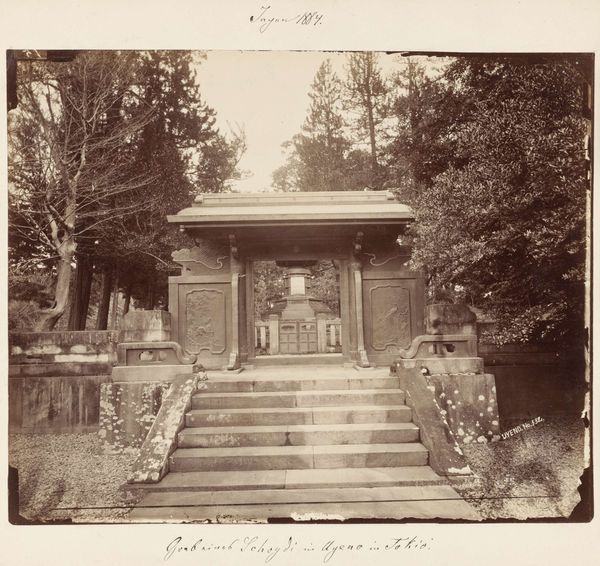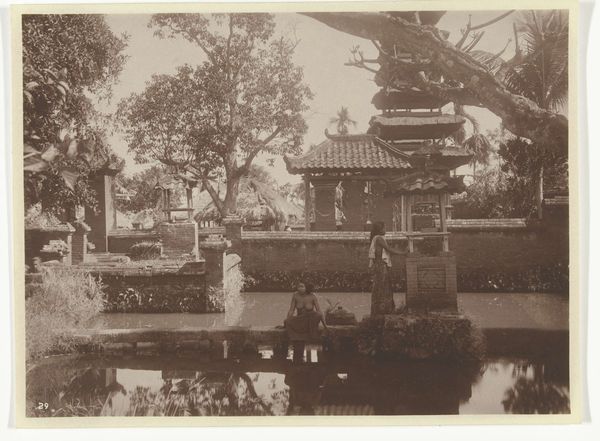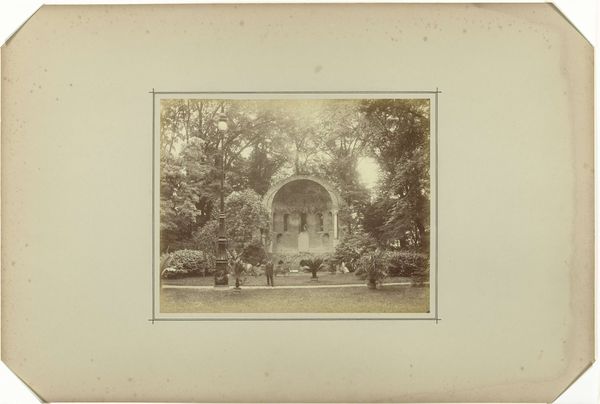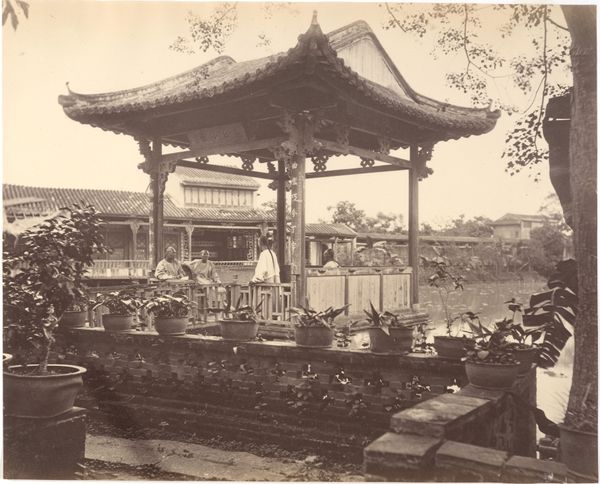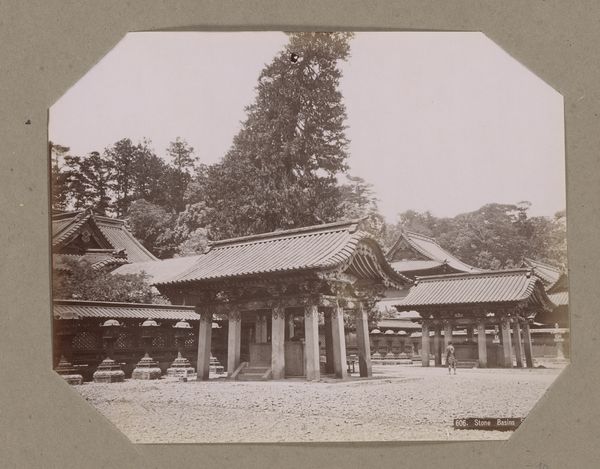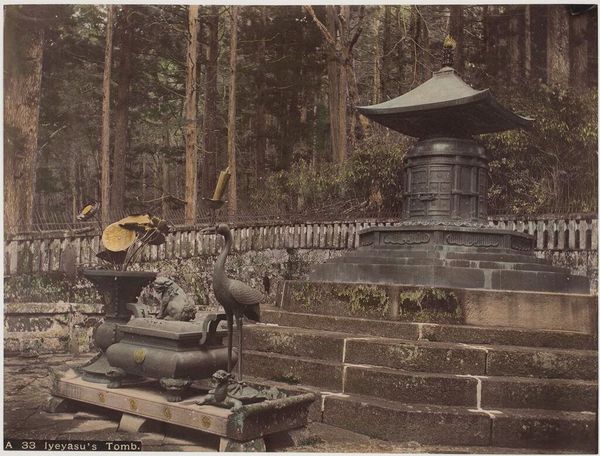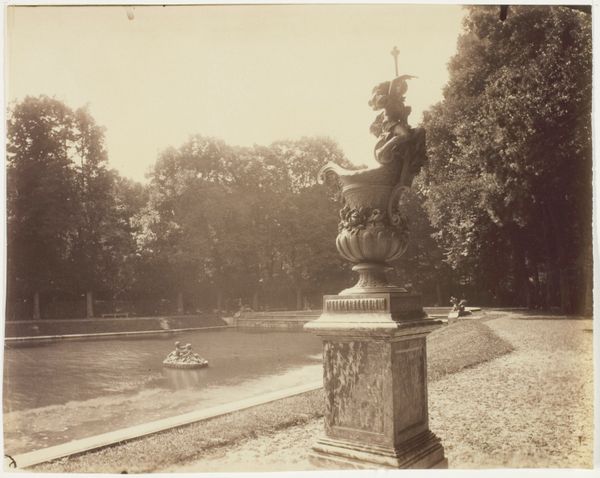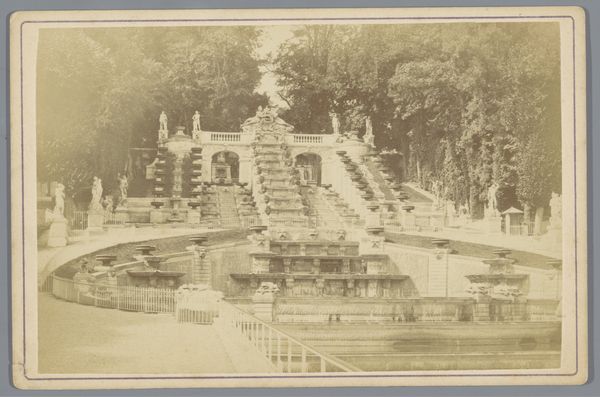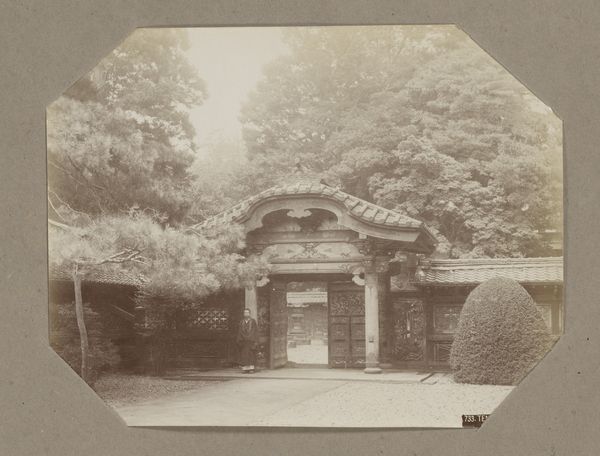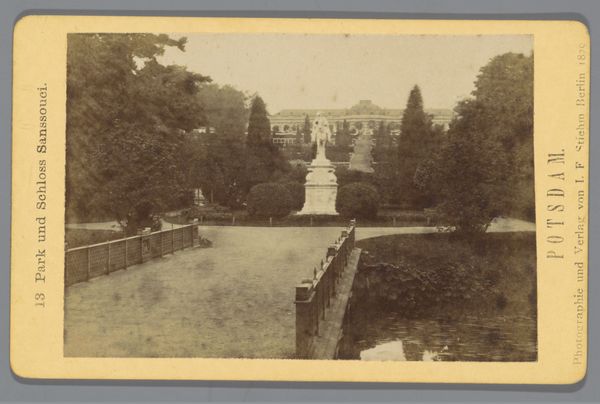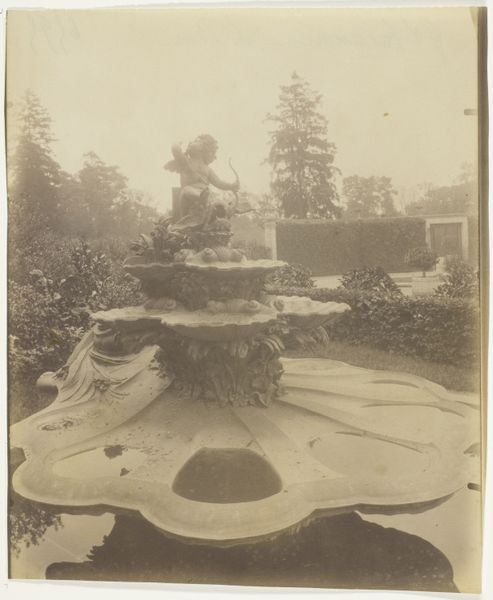
Gezicht op Okusha Hōtō, het mausoleum voor shogun Tokugawa Ieyasu op het tempelcomplex bij Nikko, Japan 1884
0:00
0:00
photography, gelatin-silver-print
#
asian-art
#
landscape
#
photography
#
orientalism
#
gelatin-silver-print
Dimensions: height 293 mm, width 318 mm
Copyright: Rijks Museum: Open Domain
This photograph captures the mausoleum for shogun Tokugawa Ieyasu, part of the temple complex at Nikko, Japan. Though the photographer is unknown, the image is made through a distinct process: the photographic print. This was cutting-edge technology in the 19th century, involving complex chemistry to capture light on a treated surface. The sepia tone we see here results from the chemical development of the print, a product of the materials used and the period in which it was made. Consider the labor involved. Not only the photographer and their equipment, but the entire industry required to manufacture the photographic paper, lenses, and developing solutions. These were all products of a rapidly industrializing world, linking the image to global networks of trade and manufacturing. Photographs, often seen as straightforward representations, are in fact deeply embedded in social and economic realities. This image not only captures a place of spiritual and historical significance, but is itself a product of complex material processes and flows of labor.
Comments
No comments
Be the first to comment and join the conversation on the ultimate creative platform.
